
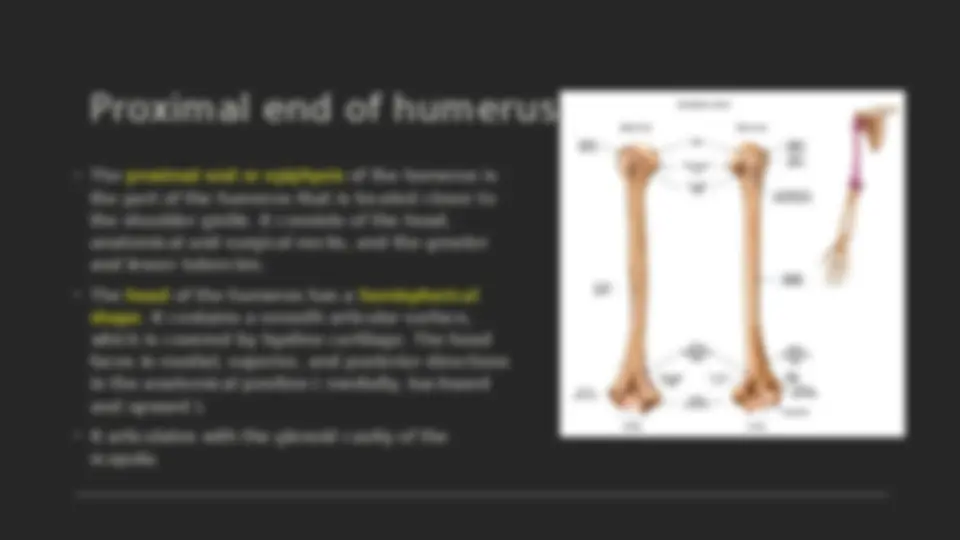
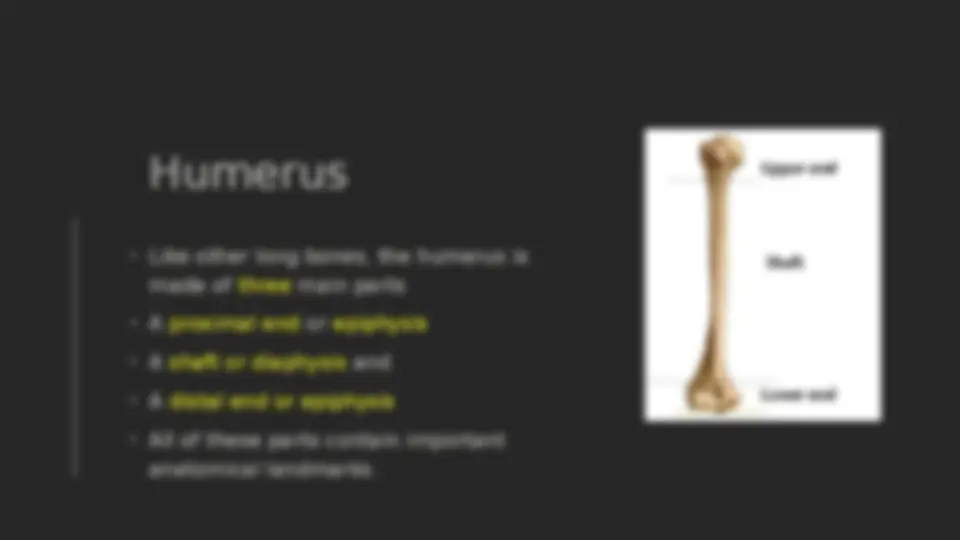
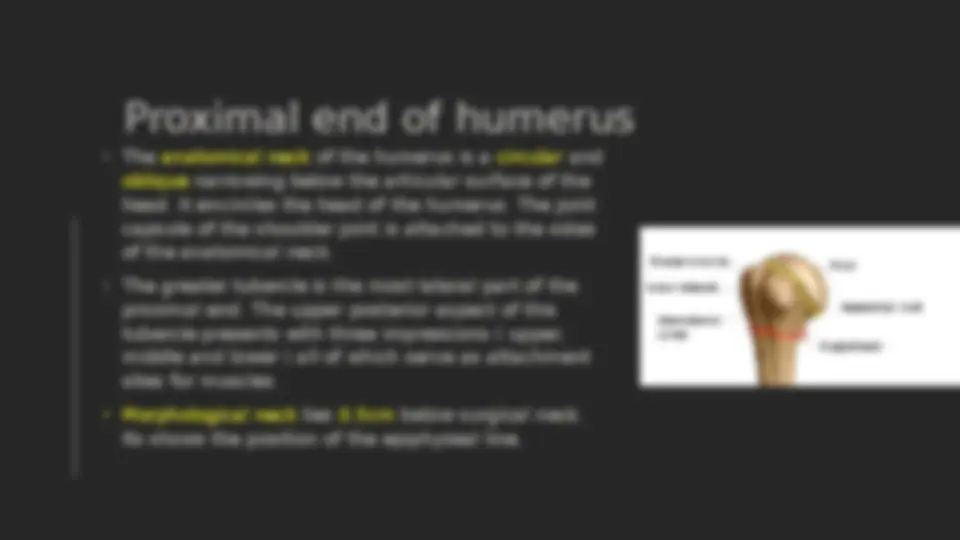
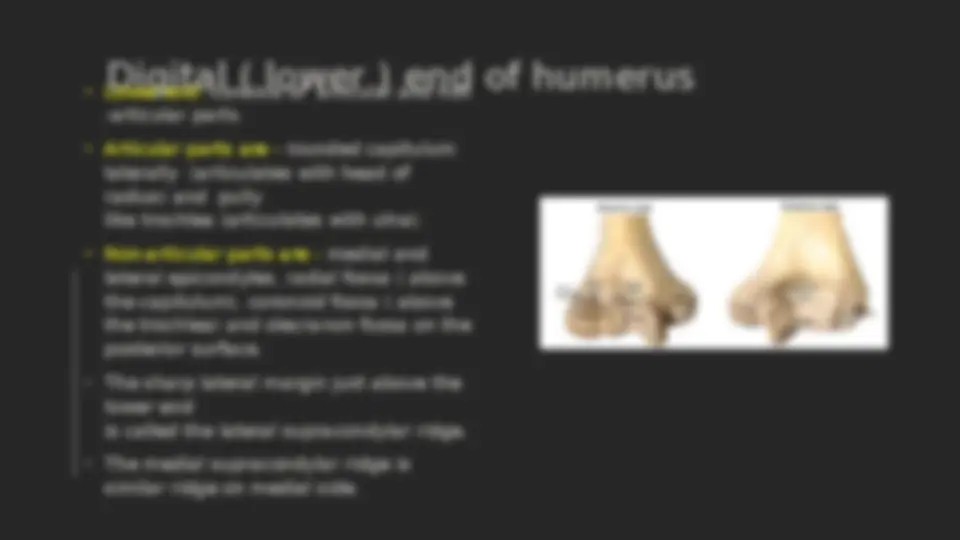
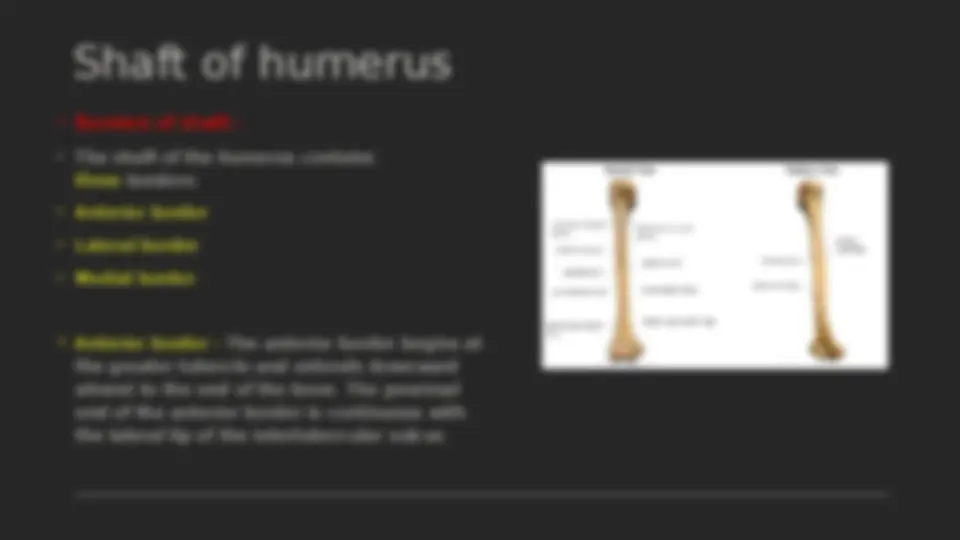
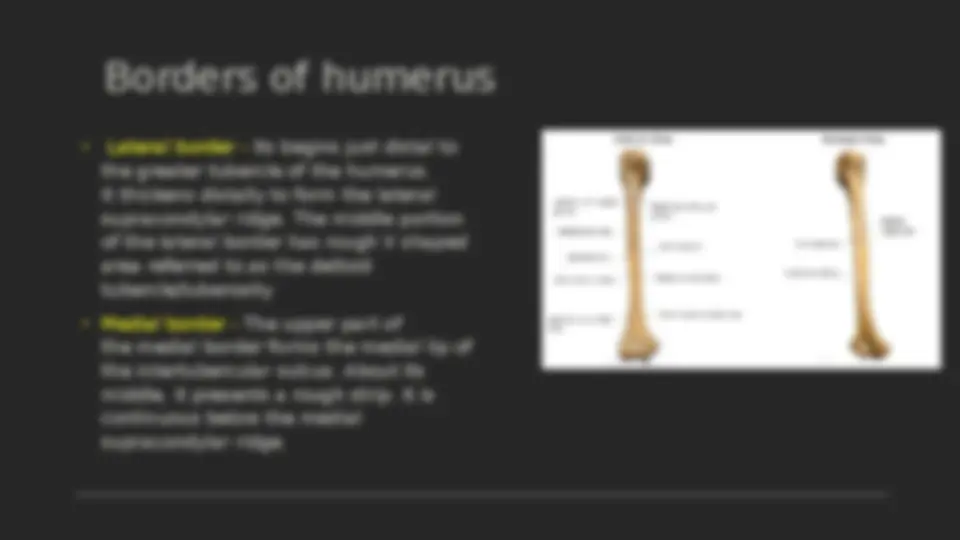
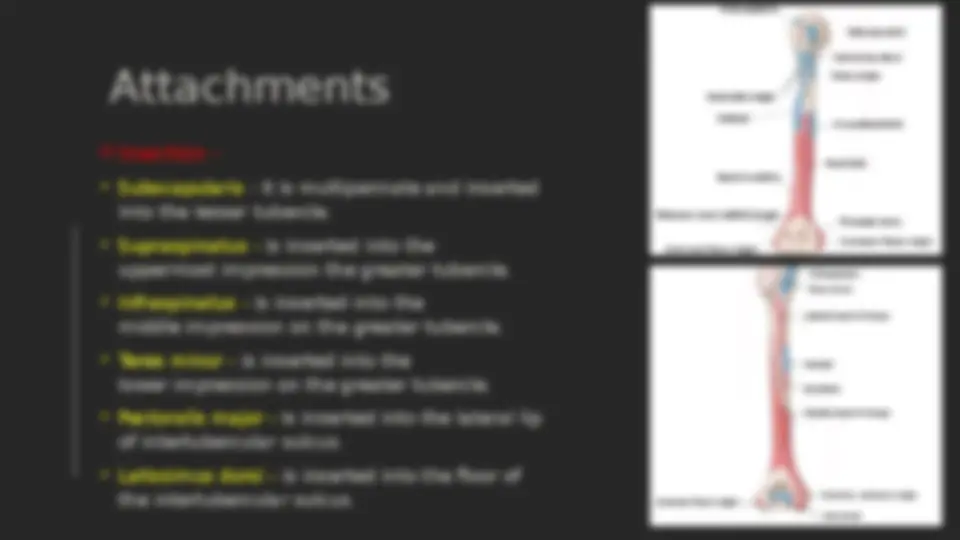
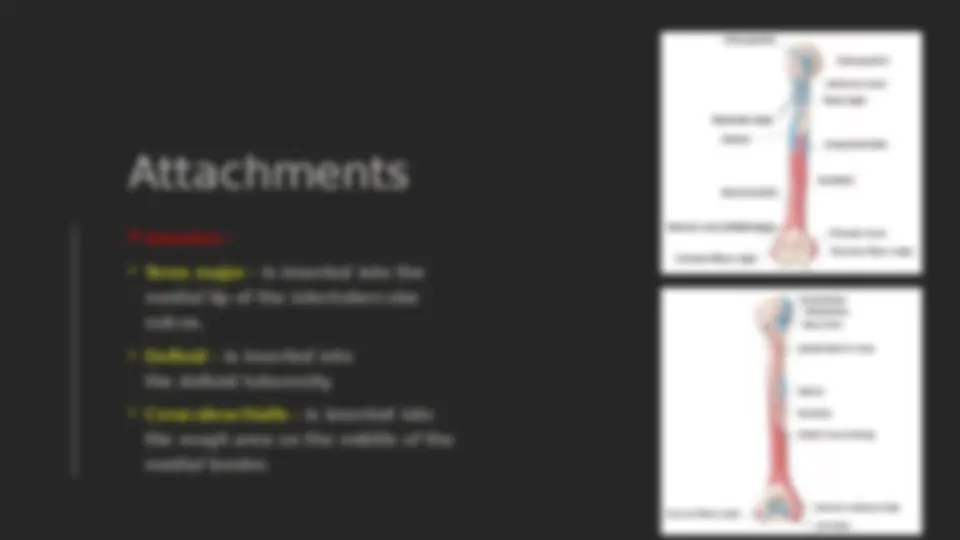
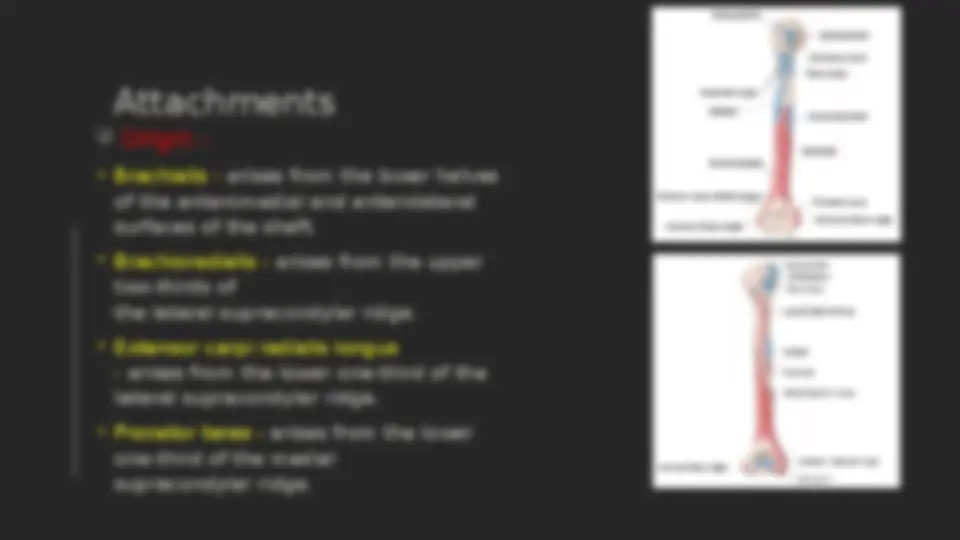
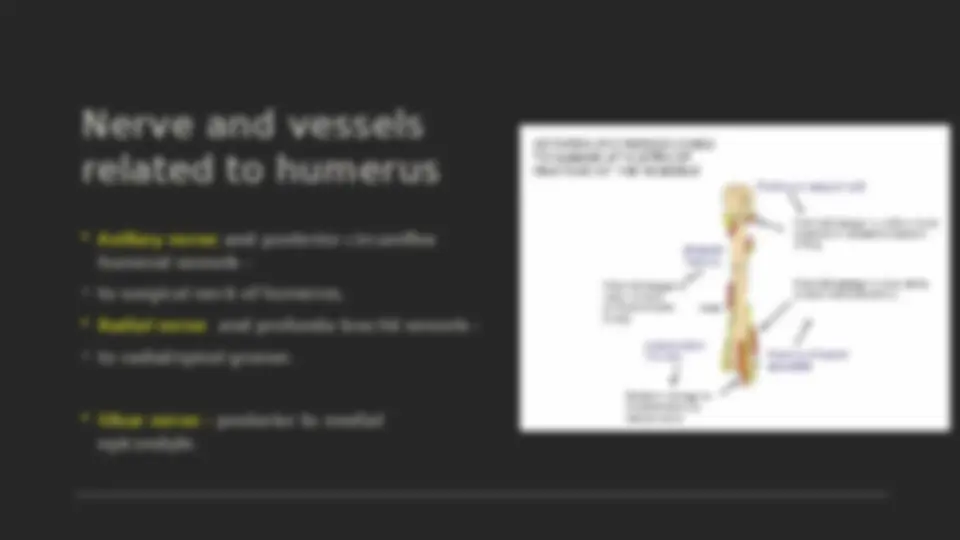
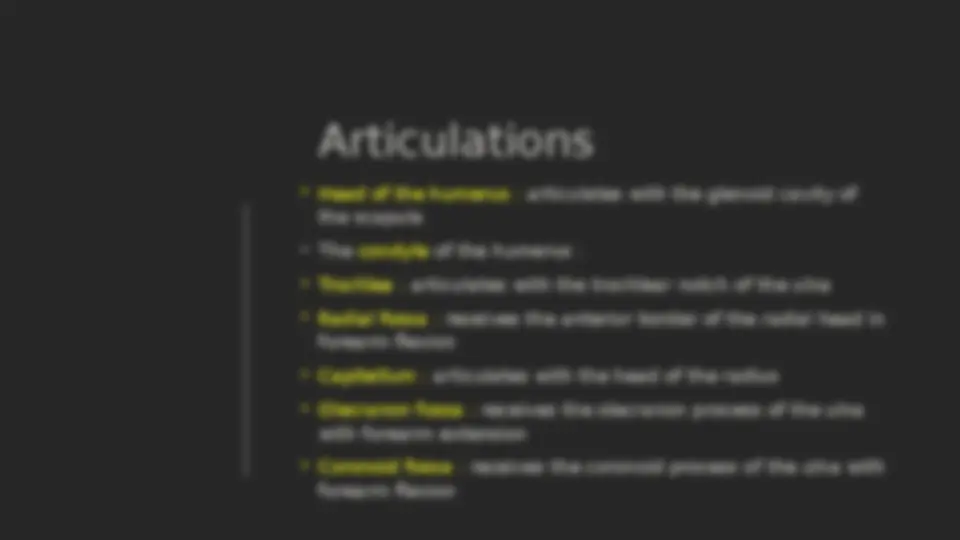
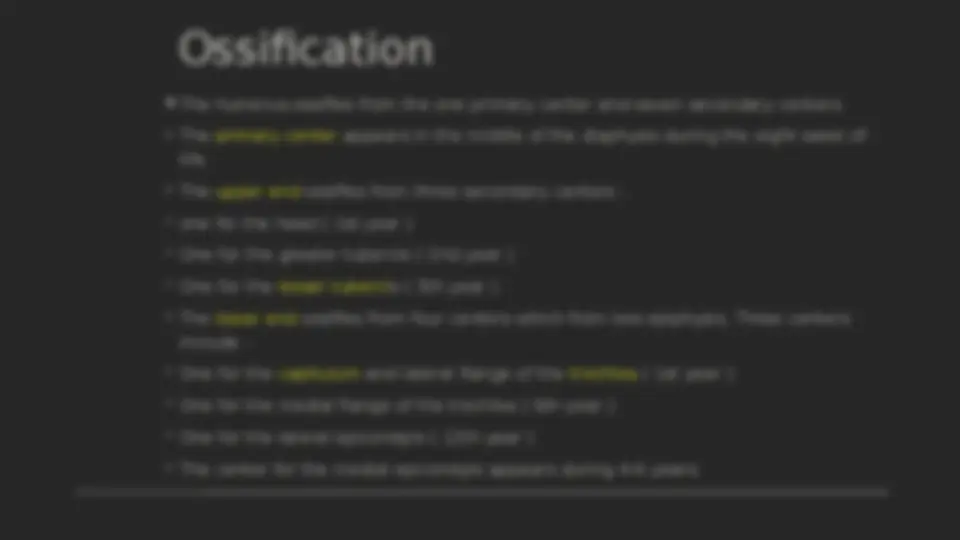
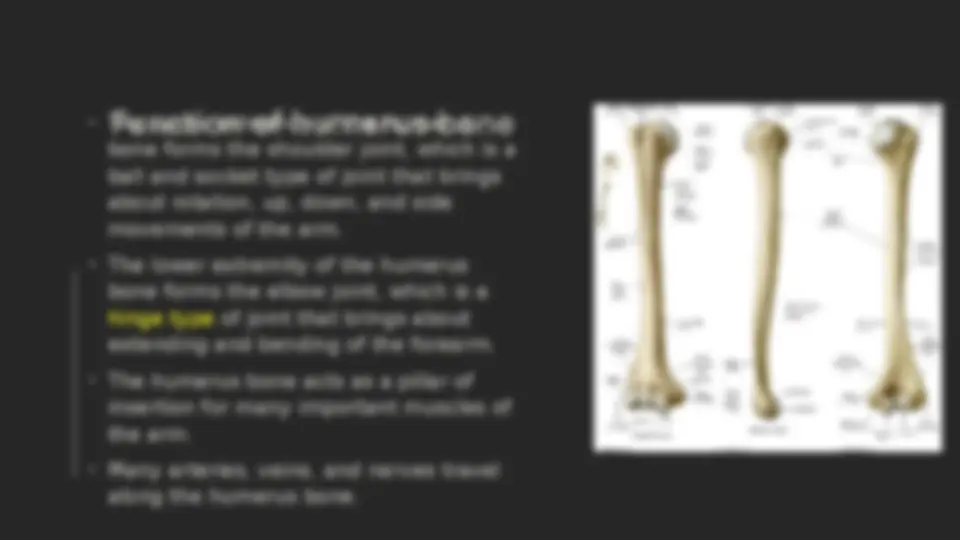
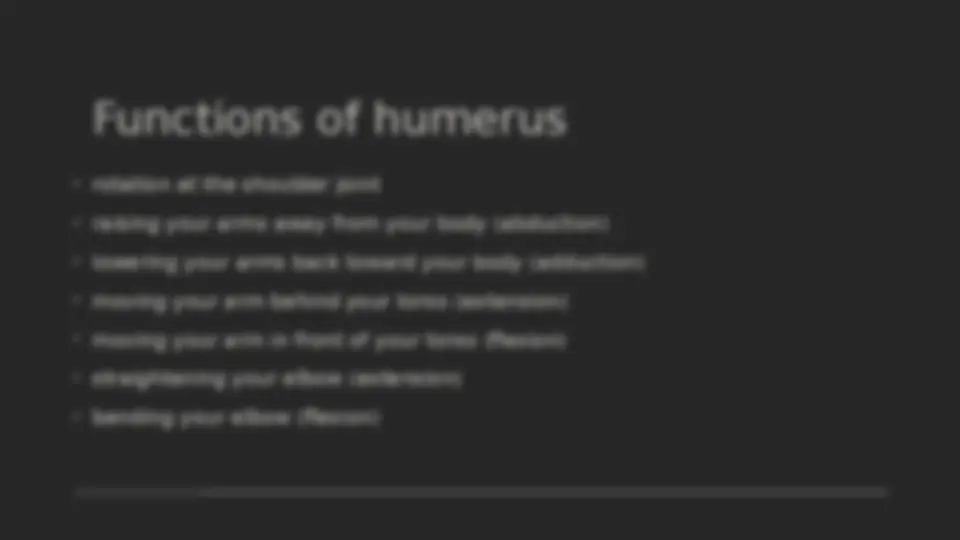
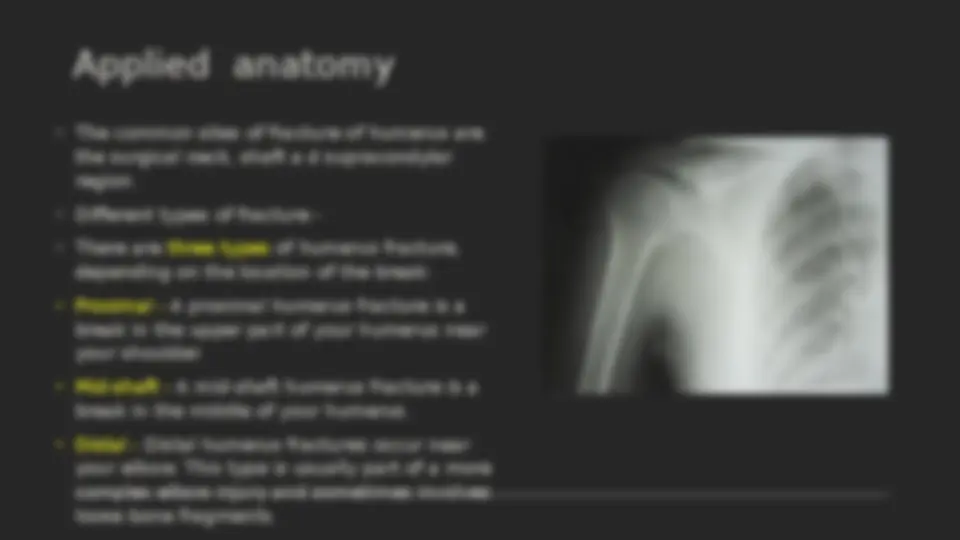
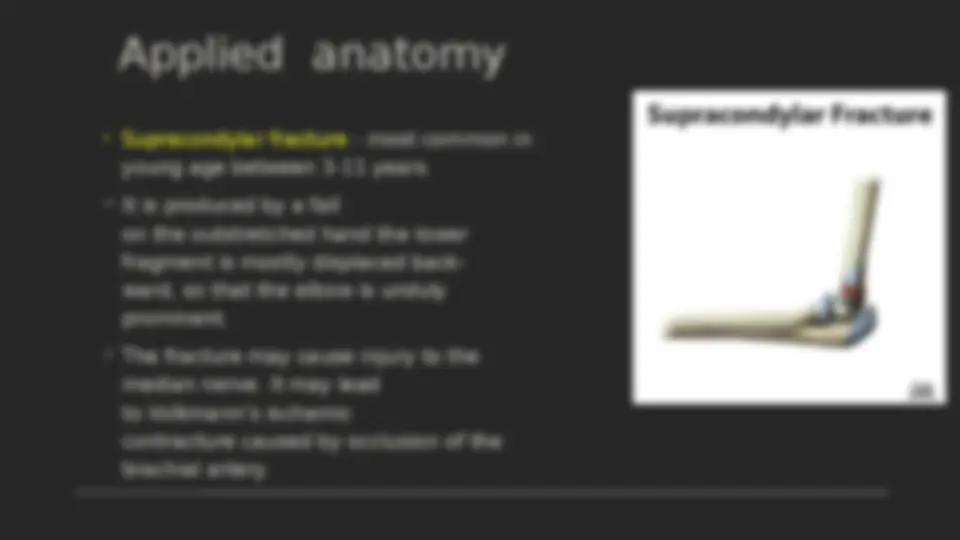
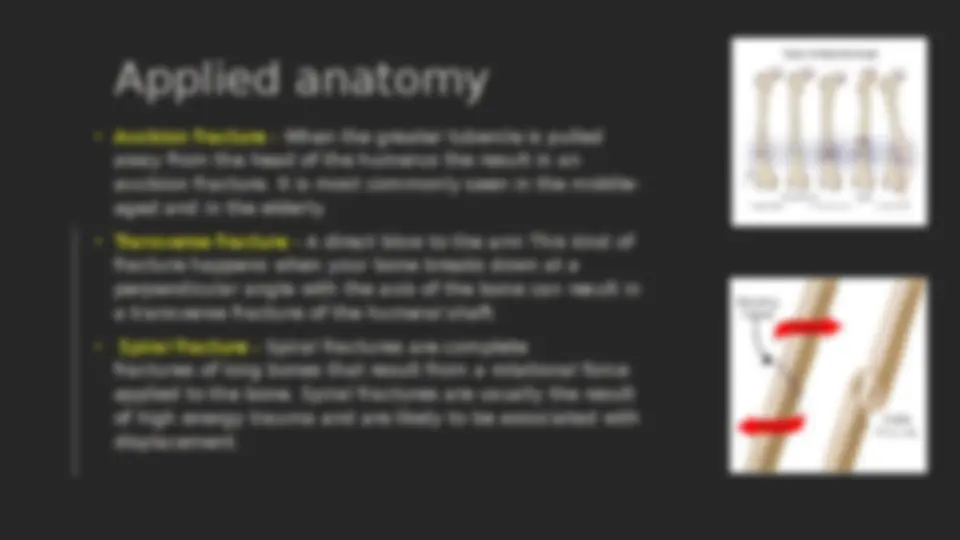


Study with the several resources on Docsity

Earn points by helping other students or get them with a premium plan


Prepare for your exams
Study with the several resources on Docsity

Earn points to download
Earn points by helping other students or get them with a premium plan
Community
Ask the community for help and clear up your study doubts
Discover the best universities in your country according to Docsity users
Free resources
Download our free guides on studying techniques, anxiety management strategies, and thesis advice from Docsity tutors
Humerus bone anatomy and their Anatomical Parts. humerus Bone Muscles Attachments and Applied Anatomy. humerus bone,humerus bone anatomy,humerus,humerus muscle attachments,humerus attachments,humerus anatomy,humerus bone anatomy muscle attachment,humerus bone attachments,humerus bone bd chaurasia,humerus bone anatomy bdc,humerus bone anatomy essentials of medical sciences,humerus bone muscle attachment,humerus attachments muscles,humerus bone attachment,humerus bone anatomy notes,muscles attachment on humerus,anatomy of humerus bone
Typology: Lecture notes
1 / 25

This page cannot be seen from the preview
Don't miss anything!


















Anatomy & Applied
Proximal end of humerus
Proximal end of humerus
Digital ( lower ) end of humerus
Borders of humerus
(^) Subscapularis - it is multipennate and inserted into the lesser tubercle. (^) Supraspinatus - is inserted into the uppermost impression the greater tubercle. (^) Infraspinatus - is inserted into the middle impression on the greater tubercle. (^) Teres minor - is inserted into the lower impression on the greater tubercle. (^) Pectoralis major - is inserted into the lateral lip of intertubercular sulcus. (^) Latissimus dorsi - is inserted into the floor of the intertubercular sulcus.
(^) Insertion - (^) Teres major - is inserted into the medial lip of the intertubercular sulcus. (^) Deltoid - is inserted into the deltoid tuberosity. (^) Coracobrachialis - is inserted into the rough area on the middle of the medial border.
(^) AttachmentsOrigin - (^) Superficial flexor muscles - arises from a common origin from the anterior aspect of the medial epicondyle. This is called common flexor origin. (^) Superficial extensor muscles - supinator have a common origin from the lateral epicondyle. This is called common extensor origin. (^) Anconeus - arises from the posterior surface of the lateral epicondyle. (^) Triceps brachii - arises from the oblique ridge on the upper part of the posterior surface above the radial groove, while its medial head arises from the posterior surface below the medial groove.
(^) Head of the humerus : articulates with the glenoid cavity of the scapula (^) The condyle of the humerus : (^) Trochlea : articulates with the trochlear notch of the ulna (^) Radial fossa : receives the anterior border of the radial head in forearm flexion (^) Capitellum : articulates with the head of the radius (^) Olecranon fossa : receives the olecranon process of the ulna with forearm extension (^) Coronoid fossa : receives the coronoid process of the ulna with forearm flexion
(^) The humerus ossifies from the one primary center and seven secondary centers. (^) The primary center appears in the middle of the diaphysis during the eight week of life. (^) The upper end ossifies from three secondary centers - (^) one for the head ( 1st year ) (^) One for the greater tubercle ( 2nd year ) (^) One for the lesser tubercle ( 5th year ) (^) The lower end ossifies from four centers which from two epiphysis. Three centers include - (^) One for the capitulum and lateral flange of the trochlea ( 1st year ) (^) One for the medial flange of the trochlea ( 9th year ) (^) One for the lateral epicondyle ( 12th year ) (^) The center for the medial epicondyle appears during 4-6 years.